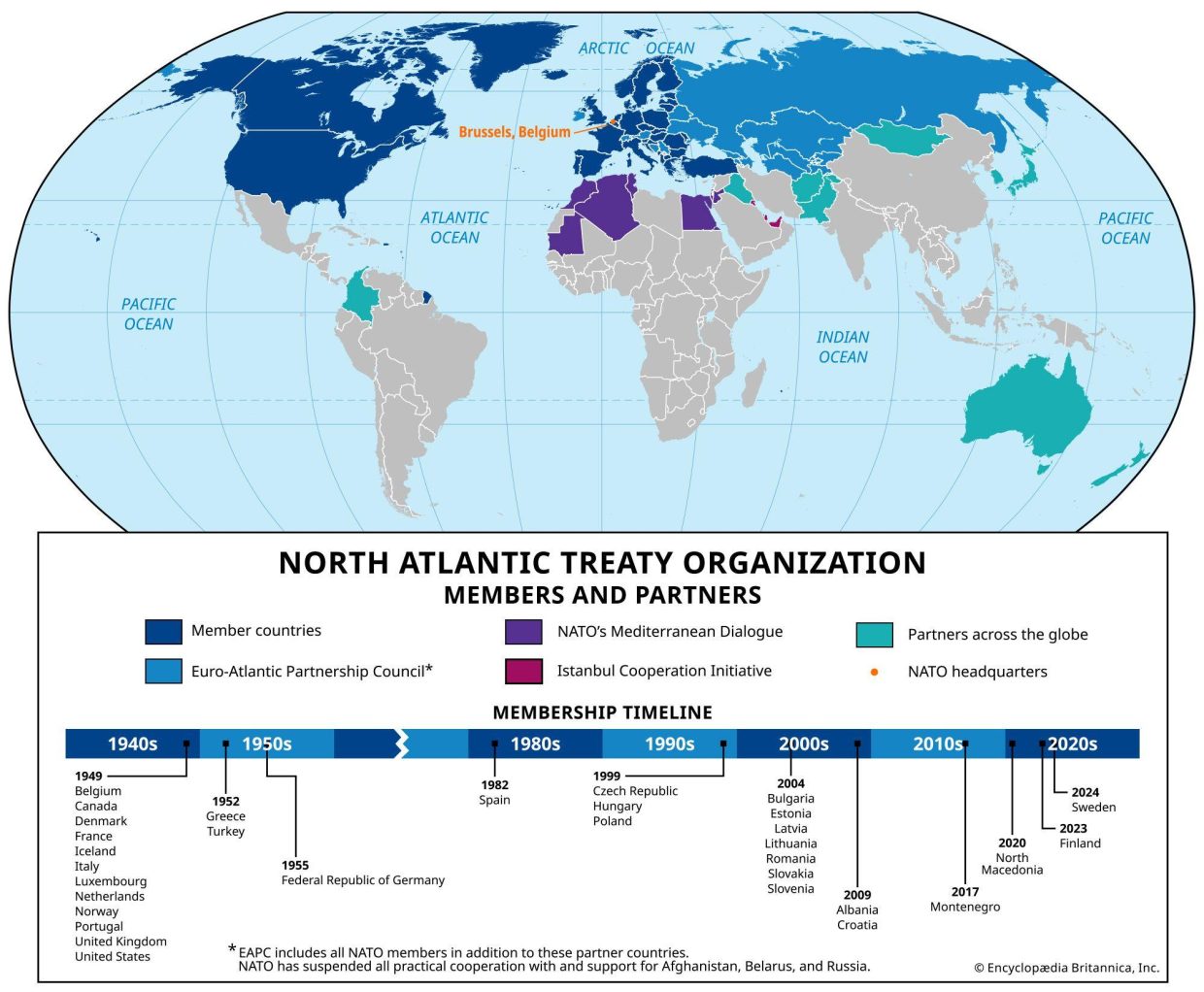In an era marked by rapidly shifting alliances and emerging threats, NATO’s influence on global security has never been more significant. As conflicts unfold across continents, this longstanding military alliance continues to shape the geopolitical landscape in profound ways. From deterring aggression to coordinating collective defense and facilitating crisis management, NATO’s role extends far beyond its original Cold War mandate. In this article, we’ll explore how NATO remains a pivotal force in addressing today’s complex global conflicts, adapting to new challenges while striving to maintain peace and stability worldwide.
Table of Contents
- NATO’s Strategic Influence on Modern Conflict Dynamics
- Analyzing NATO’s Response to Emerging Global Threats
- The Alliance’s Role in Fostering International Security Cooperation
- Policy Recommendations for Enhancing NATO’s Future Effectiveness
- In Summary
NATO’s Strategic Influence on Modern Conflict Dynamics
At the heart of contemporary security dilemmas lies an alliance whose strategic posture continuously shapes conflict landscapes across continents. NATO’s operational doctrine not only serves as a deterrent but also actively molds the behavior of state and non-state actors in volatile regions. Its ability to project power, combined with robust intelligence-sharing frameworks, has redefined how alliances counter emerging threats such as cyber warfare, hybrid tactics, and asymmetric engagements. By establishing a credible collective defense mechanism, NATO compels adversaries to reconsider direct confrontations, thereby altering the calculus of modern conflict escalation.
Key elements that underline NATO’s strategic influence include:
- Rapid deployment capabilities: Ensuring swift multinational responses to crises and conflict zones worldwide.
- Integrated defense systems: Leveraging cutting-edge technology and interoperability to maintain superiority in air, land, sea, and cyber domains.
- Political cohesion: Sustaining alliance unity amidst diverse member interests, thereby enhancing negotiation leverage and diplomatic pressure.
- Adaptation to new warfare: Developing doctrines to counter hybrid threats that blur the lines between peace and war.
Analyzing NATO’s Response to Emerging Global Threats
In an era characterized by rapidly evolving threats—from cyberattacks and information warfare to the resurgence of state-sponsored aggression—NATO’s adaptive strategies are more critical than ever. The alliance has shifted from traditional military deterrence to a multidimensional approach, incorporating intelligence-sharing, cyber defense initiatives, and enhanced rapid response mechanisms. By fostering unprecedented levels of collaboration among member states, NATO has managed to build resilience against threats that transcend borders, sectors, and domains. This proactive posture enables the alliance to not only respond to crises but also to anticipate and mitigate risks before escalation occurs, maintaining stability in an unpredictable global landscape.
Key elements of this evolving response include:
- Enhanced Cyber Defense Capabilities: NATO’s establishment of a dedicated Cyber Operations Center highlights its commitment to protecting critical infrastructure and communication networks.
- Integration of Emerging Technologies: Investment in artificial intelligence and autonomous systems empowers member nations to gain a strategic advantage in digital and conventional warfare.
- Expanded Partnerships: Collaboration with non-member states, regional organizations, and private sectors ensures a comprehensive security architecture, amplifying NATO’s reach and effectiveness.
These initiatives mark a vital transformation in the alliance’s doctrine, underscoring a holistic approach that blends diplomacy, defense, and innovation to confront the complex challenges shaping today’s geopolitical environment.
The Alliance’s Role in Fostering International Security Cooperation
International security cooperation is a cornerstone of stability in today’s multipolar world, and the alliance stands at the forefront of this effort. By uniting member states under a shared commitment to collective defense, the organization transcends individual national interests to build a robust framework where dialogue, intelligence sharing, and joint operations become the norm rather than exceptions. This collective approach not only deters aggression but also enables rapid, coordinated responses to emerging threats—from cyberattacks to regional conflicts—demonstrating the tangible benefits of mutual trust and interoperability.
What sets the alliance apart is its ability to catalyze partnerships beyond its immediate membership, engaging with global actors to create a wider security network. This includes:
- Cooperative programs with non-member countries to strengthen defense capabilities.
- Joint exercises to improve responsiveness and build interoperability.
- Strategic dialogues addressing unconventional challenges such as terrorism and hybrid warfare.
Such efforts underscore the alliance’s evolving role from a Cold War-era military pact to a dynamic platform that fosters resilience against complex, transnational threats, amplifying the collective voice in shaping a more secure international order.
Policy Recommendations for Enhancing NATO’s Future Effectiveness
To secure NATO’s position as a cornerstone of global security, it is imperative to adopt a forward-looking strategy that embraces both technological advancement and political unity. Prioritizing investments in cutting-edge defense technologies such as artificial intelligence, cyber defense capabilities, and unmanned systems will ensure that the alliance remains one step ahead of emerging threats. Equally important is revitalizing the diplomatic framework within NATO to foster greater cohesion among member states, encouraging transparent communication, and harmonizing defense spending to close capability gaps.
Additionally, enhancing NATO’s responsiveness requires a multipronged approach focused on agile decision-making and robust partnerships beyond traditional borders. This includes:
- Expanding joint training exercises to simulate complex, hybrid warfare scenarios.
- Strengthening collaboration with non-member allies to address transnational challenges like terrorism and cyberattacks.
- Integrating climate resilience into military planning to mitigate the security risks posed by environmental changes.
By executing these recommendations, NATO can fortify its deterrence posture while adapting to the evolving geopolitical landscape, thus securing peace and stability in a volatile world.
In Summary
As the geopolitical landscape continues to evolve with new challenges and emerging threats, NATO’s role remains as pivotal as ever. From deterrence and defense to crisis management and fostering international cooperation, the alliance shapes the dynamics of today’s global conflicts in profound ways. Understanding NATO’s influence helps not only to decode current events but also to anticipate future developments on the world stage. For those tracking the shifting alliances and power plays around the globe, keeping an eye on NATO is essential—because in the complex web of modern security, this century-old alliance still holds the keys to peace and stability.













